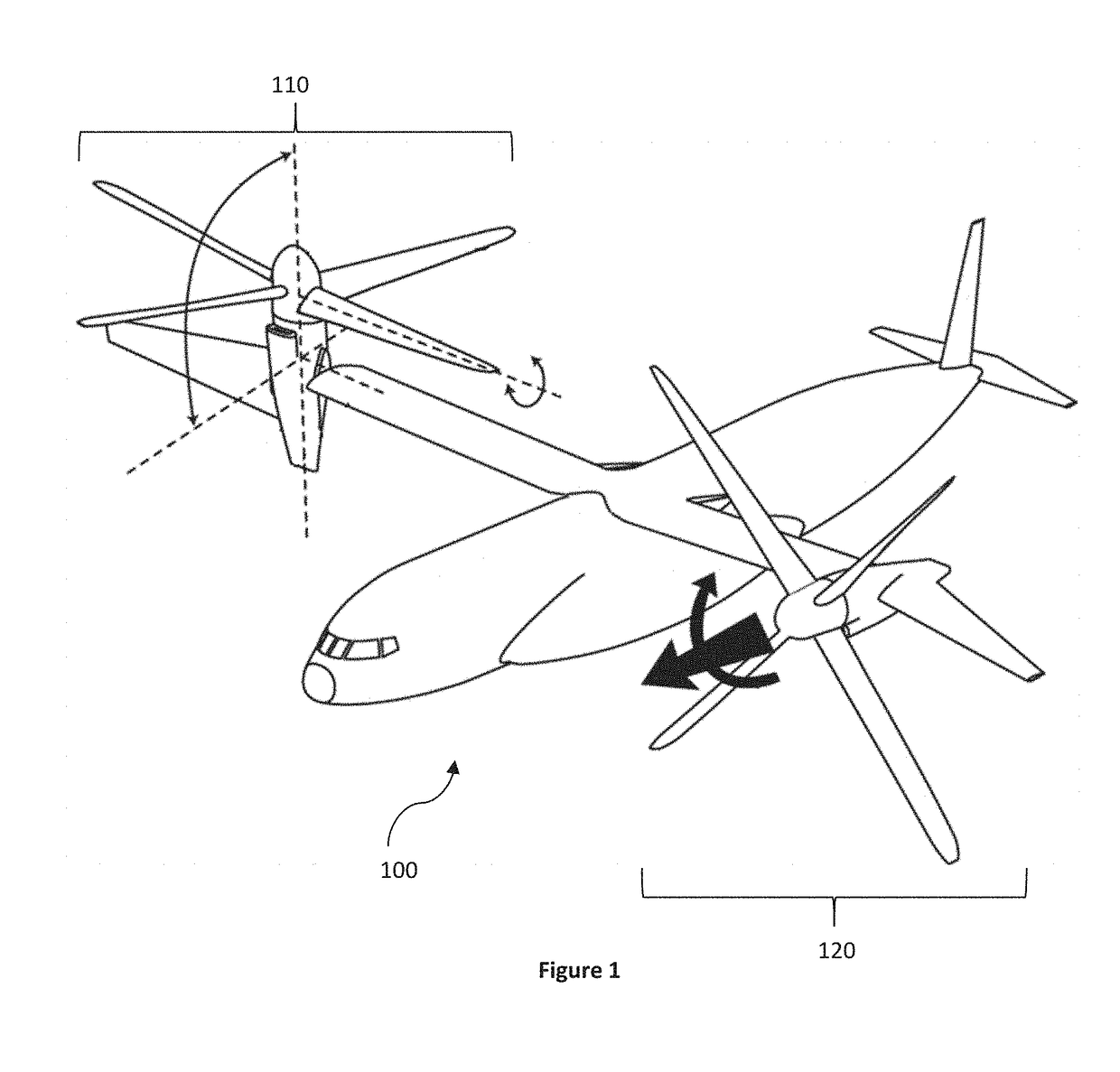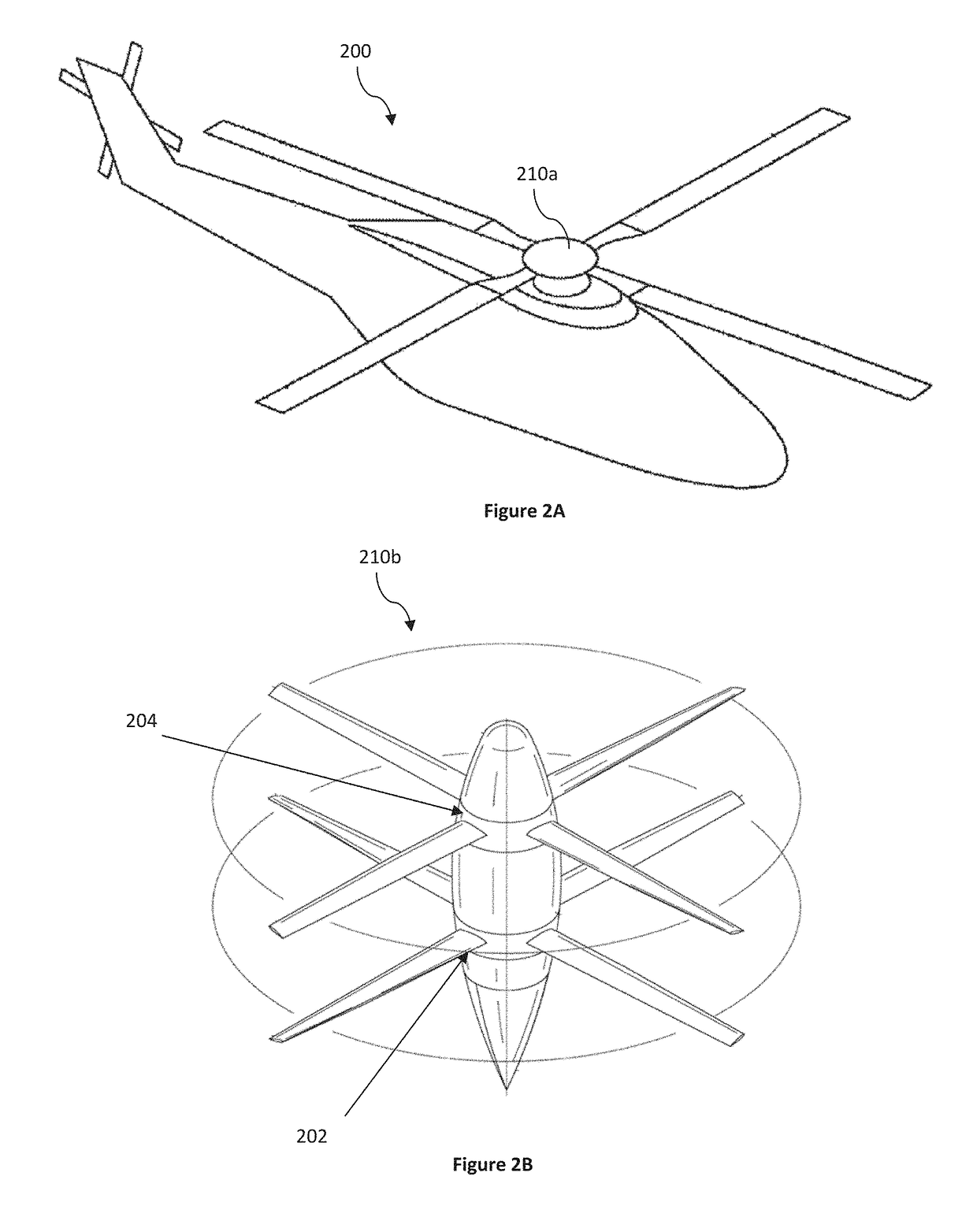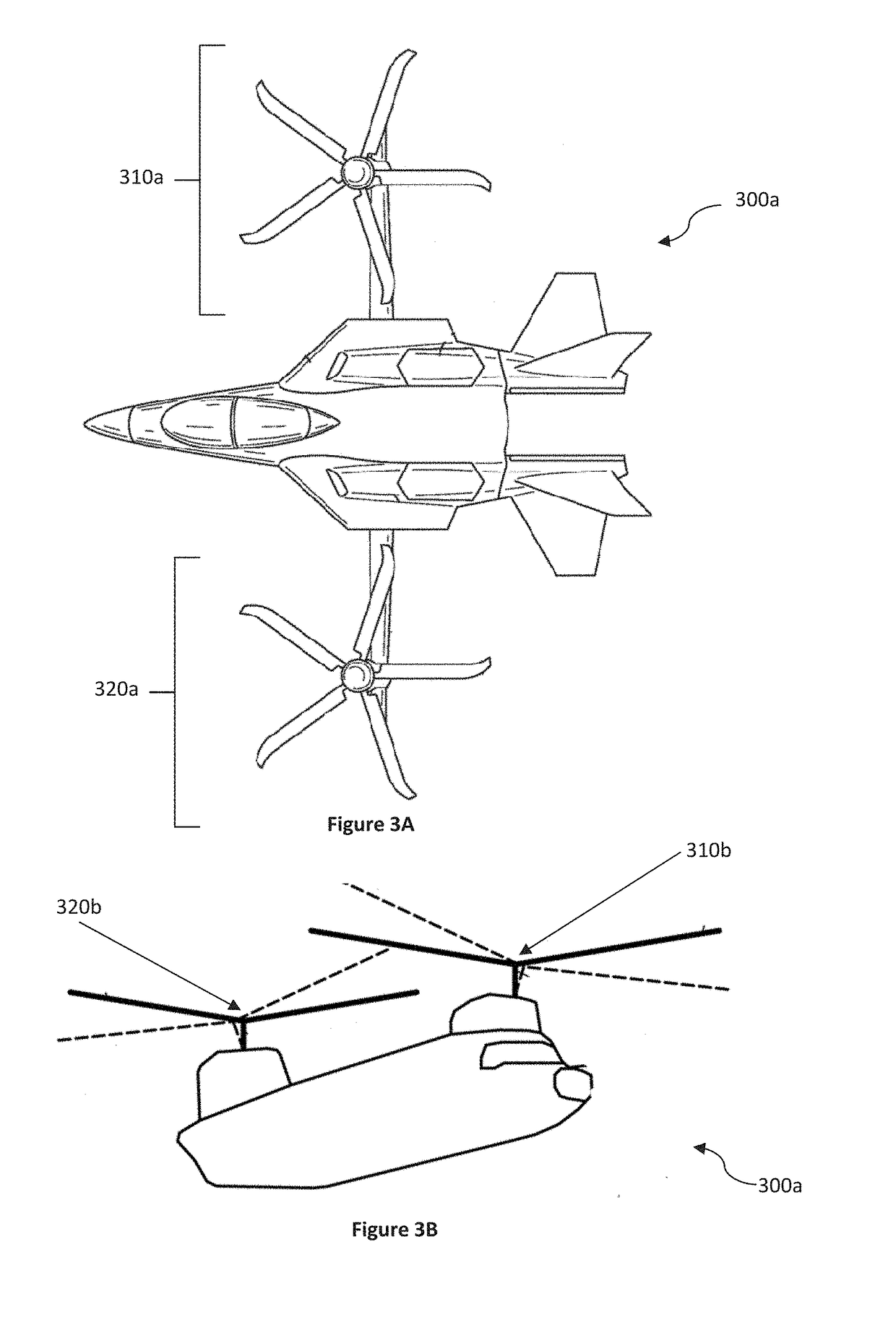Use of individual blade control on a propeller or rotor in axial flight for the purpose of aerodynamic braking and power response modulation
a technology of aerodynamic braking and power response modulation, applied in the field of rotorcraft, can solve the problems of large deviation from linear relationships, excess airfoil drag, rotational acceleration that increases shaft rpm, etc., and achieves the effects of improving aerodynamic braking, improving aircraft flight dynamics, and reducing torque stress
- Summary
- Abstract
- Description
- Claims
- Application Information
AI Technical Summary
Benefits of technology
Problems solved by technology
Method used
Image
Examples
Embodiment Construction
[0048]The inventive subject matter contemplates systems, devices, methods, and uses of IBC-capable propellers or rotors to modify flight characteristics or dynamics of aircraft, for example (1) to achieve greater aerodynamic braking effectiveness than would otherwise be possible with non-IBC propellers or rotors, or (2) to rapidly modulate the amount of driveshaft torque required to drive a rotor or propeller while maintaining constant thrust (thus varying the effective lifting efficiency of the rotor).
[0049]Various objects, features, aspects and advantages of the inventive subject matter will become more apparent from the detailed description of preferred embodiments herein, along with the accompanying drawing figures in which like numerals represent like components.
[0050]Aerodynamic Braking
[0051]The inventive subject matter provides apparatus, systems and methods in which IBC-capable propellers or rotors are used to achieve greater braking effectiveness than would otherwise be pos...
PUM
 Login to View More
Login to View More Abstract
Description
Claims
Application Information
 Login to View More
Login to View More - R&D
- Intellectual Property
- Life Sciences
- Materials
- Tech Scout
- Unparalleled Data Quality
- Higher Quality Content
- 60% Fewer Hallucinations
Browse by: Latest US Patents, China's latest patents, Technical Efficacy Thesaurus, Application Domain, Technology Topic, Popular Technical Reports.
© 2025 PatSnap. All rights reserved.Legal|Privacy policy|Modern Slavery Act Transparency Statement|Sitemap|About US| Contact US: help@patsnap.com



